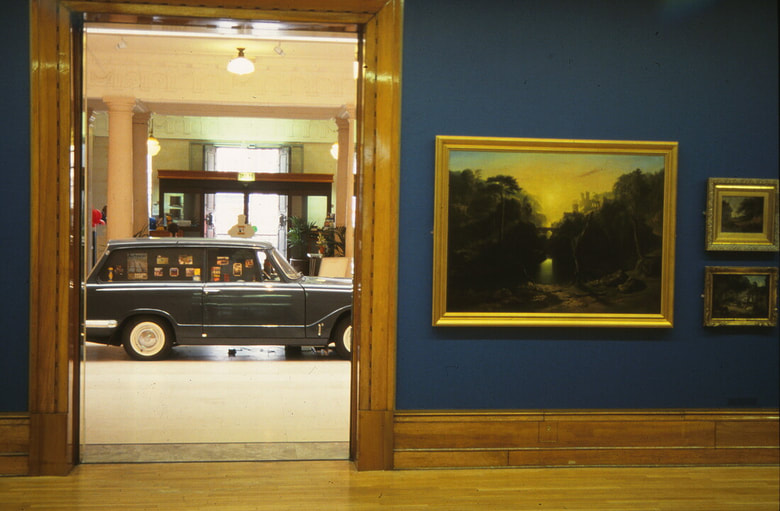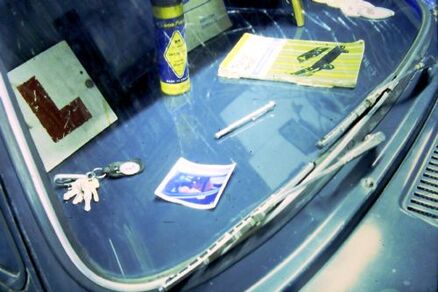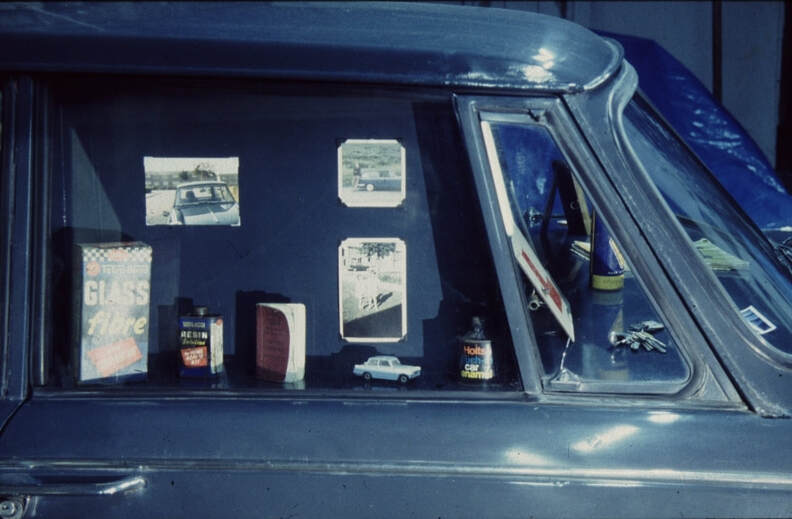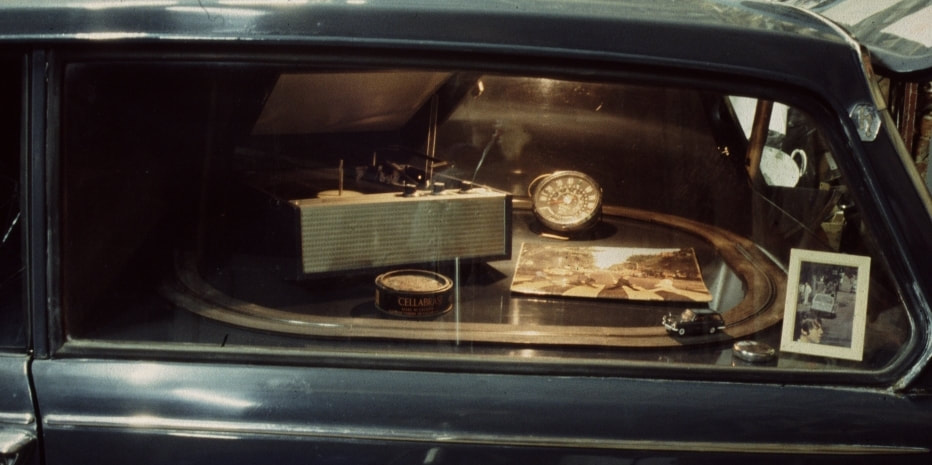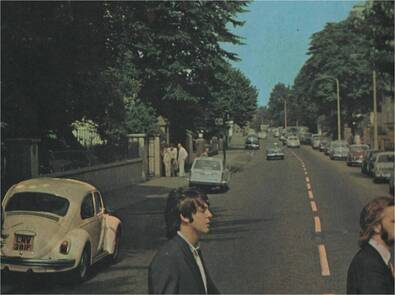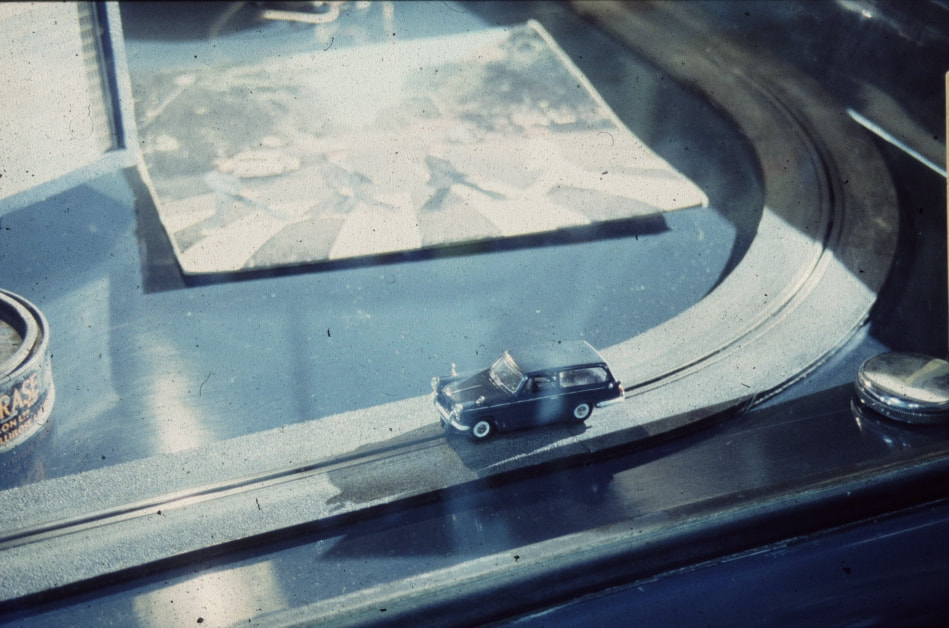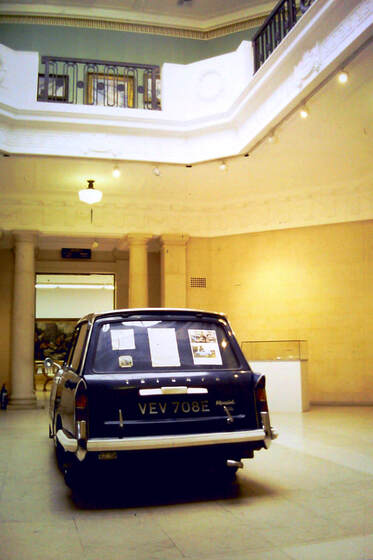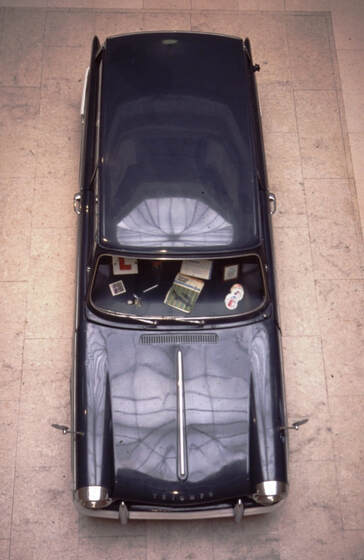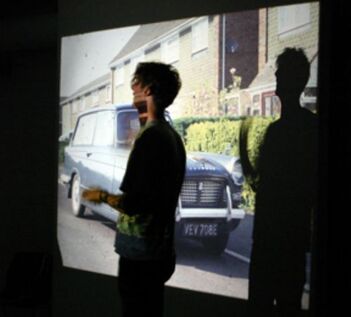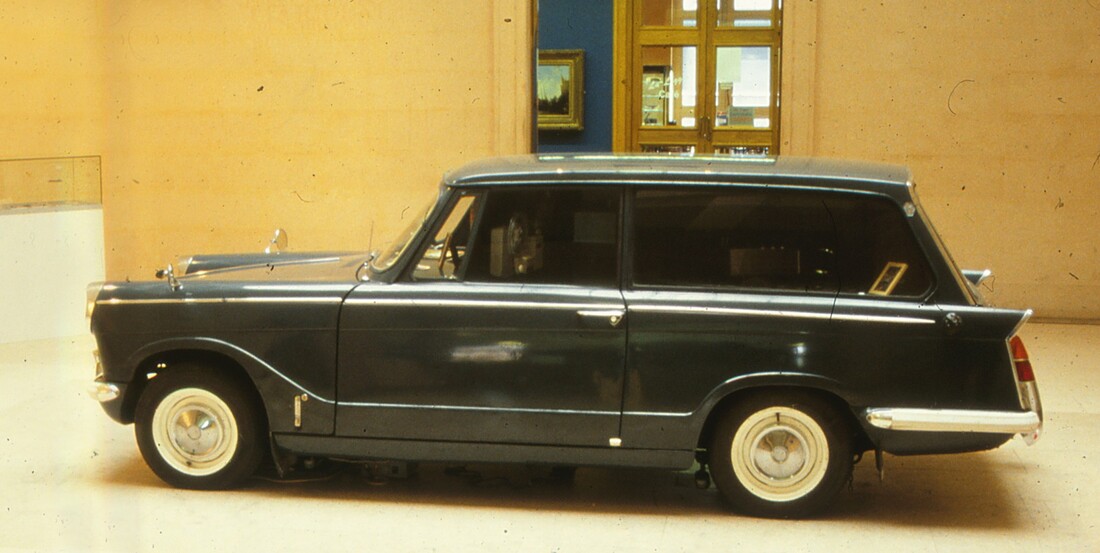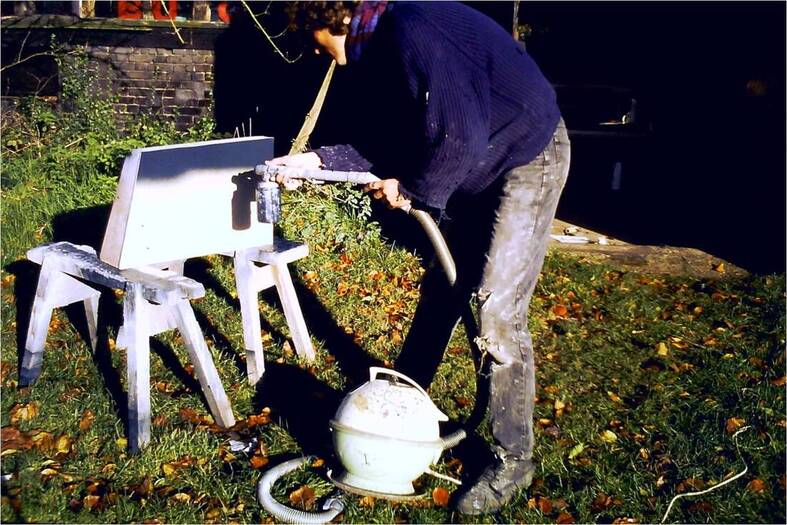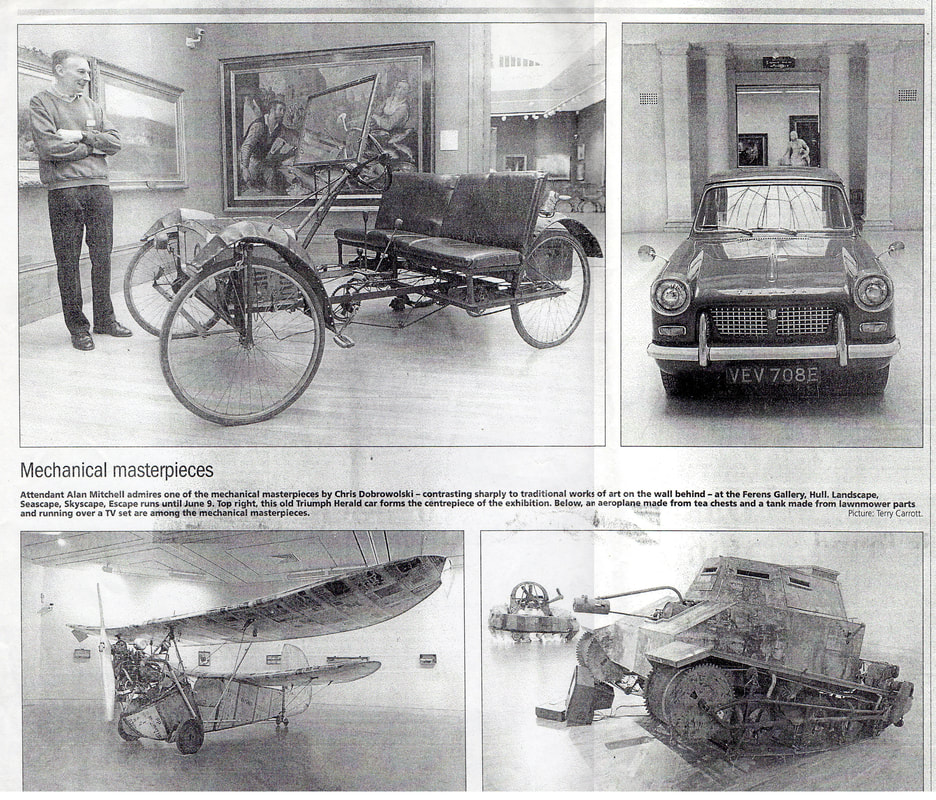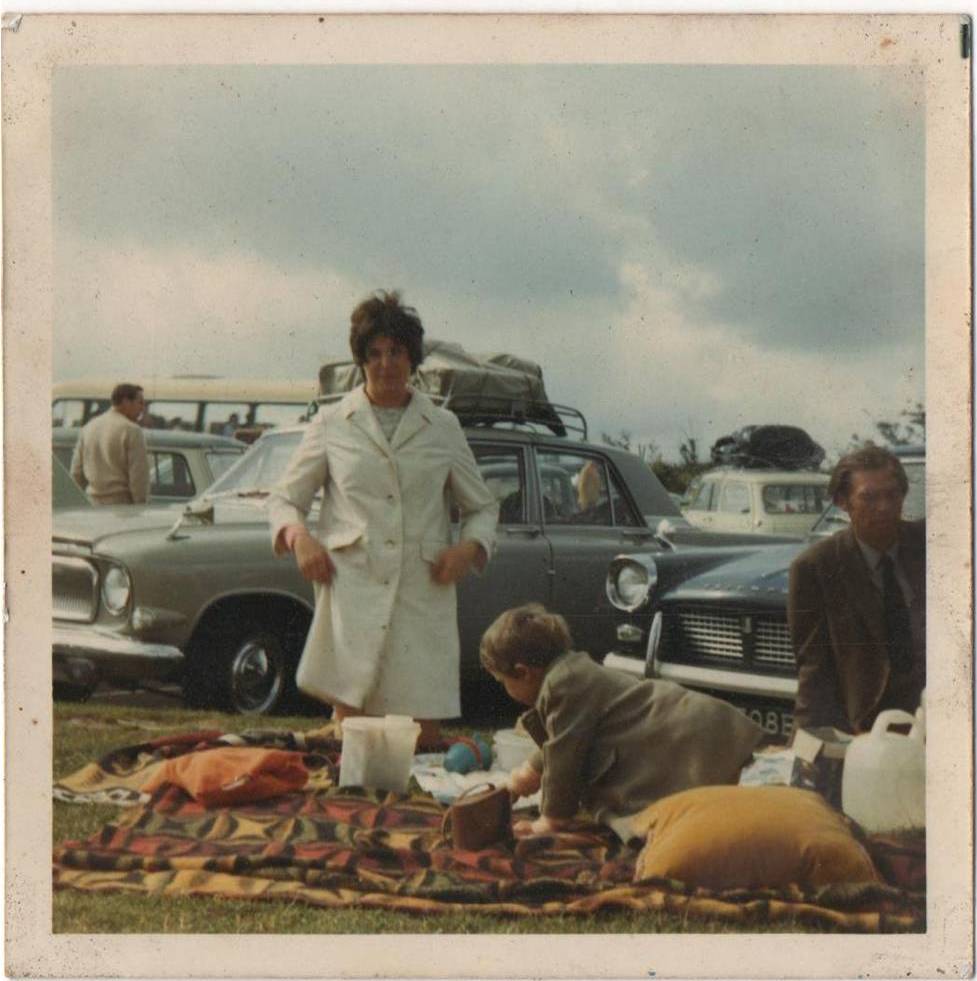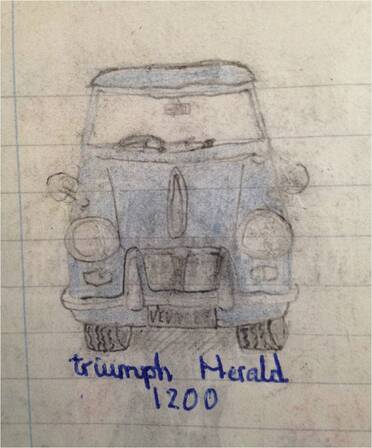-
in gallery
- Transit Transition >
- Remnants Of Utopia >
-
Antarctica
>
- Project Outline
- Antarctica Essay
- Reviews
- Sledge
- Toy Sledge
- Airfix Antarctic Aeroplane Hoover
- Eating Penguins
- The Rime Of The Ancient Mariner
- Toy Snowmobile
- Rat Box, Bird Island
- Rejection Letters
- The Last Roll Of Kodachrome In The World
- John Deere Gator And Specimen
- There Are No More Dogs In Antarctica
- Furthest South- J C B
- Captain Scotts Bookshelf
- Antarctic Toy Portraits
-
Landscape, Seascape, Skyscape , Escape
>
-
Offer Must End Soon
>
- Essay Jess Twyman
- Reviews
- Offer Must End Soon
- Buy My Painting!
- "Buy My Painting!" For the hard of hearing.
- "Don't Make Me Take It All Back Home With Me!"
- How We Won The War
- "Stop me and buy one!"
- 'The Cornfield'... free gift inside
- "Catalogue!"
- The Contemporary Art Scene
- Camera Crash
- "Untitled" hanging itself
- Buy My Fucking Painting!
- Absolut Ship !
- Executive Toy!
- Art Stunt Suicide Disaster
- Roll up, Roll up. Get your Art here!
- Big Country >
- All at Sea
- & Model >
- Give Me The Money
- Music and domestic appliances >
- ...on the wall...in boxes >
- Sweet Jars, glass cases on books >
- On Stage
-
Outside gallery
- Auspicious Phoenix Recycling Palace
- Covid lockdown with Boris >
- Goat Train
- washed up Car - go >
- Vanishing Point >
- Badgast Residency >
- Selfie Slot Car Racing >
- Coventry Transport Museum Residency >
- Cheap Cheap >
- A Portrait of Casper DeBoer
- Cranes
- Hessle Road Residency >
- Reisbureau Mareado >
- Windmills >
- Performance Sculptures >
- Accessible Collectible
-
publications
- Solo projects >
-
Group Projects
>
- oceans
- Photography, Curation, Criticism:
- Art in Oisterwijk 2022
- Talk to me
- & Model
- Middlesbrough Art Weekender
- Polar Record
- Translating the Street
- 1st Sino/british Cont. Art, Yentai
- Extending Ecocriticism
- The Dream Cafe
- Performance, Transport And Mobility
- shipwreck in art and literature
- Inbetween PS1, New York and Shanghai
- Odd Coupling
- Landscapes of Exploration
- IT! The Worst Magazine Ever : Poland
- Flip Shift Show Switch
- Baudrillard Now
- The Juddykes
- Dr Roberts Magic Bus
- Continental Breakfast
- Lat (living Apart Together)
- North. Amsterdam 2004
- Westwijk, Vlaardingen, De Strip
- Da Da Da Strategies Against Marketecture
- Reisburo Mareado (The Travel Brochure)
- Catalogus Mareado
- Kunst Over De Grens
- This Flat Earth
- The Uses of an Artist
- Kettles Yard Open 97
- Royal College Of Art Centenary Year
- Millennium Encyclopedia
- Press
- About / contact
In 2002 I was offered a retrospective exhibition at the Ferens art gallery, Hull. Part of this show included a new commission using this Triumph Herald estate car. The car had been in my family since new, my father buying it when my mum was pregnant with me. My dad finally replaced the car and it was given to me when I turned 18. I left it in my dad’s lock up garage for three years while I was at art college but being so old it wasn’t in great shape. After moving back home to my parent’s house after graduating from art school I had to face up to what to do with it. The most practical answer was to get rid of it. However I had just spent my time at art school making the hovercraft, boat and pedal car; I had essentially spent 3 years imbuing vehicles with meaning and calling them art. In this context it seemed wrong to not explore the possibilities of this vehicle that obviously had a lot of personal meaning to me. I spent the following year restoring the car and consequently I included it in this series of vehicles.
Each window has been converted into a display case of personal belongings that relate to the car. In the rear window the objects include the original invoice for the new car alongside my birth certificate.
Timescape Escape explores the reasons why the car might not be just another old car and integrates the personal with the physical object in the gallery. In a way it was a sculptural version of a later performance lecture I made called ‘All Roads lead to Rome’. This went on to be quite successful and in many ways has probably eclipsed this earlier work. 'Timescape Escape' relied on the viewer being a bit of a detective pieceing the visual clues together to realise the significance of the car. 'All Roads lead to Rome' was an adventure relayed through an elborate slide show that made the personal significance far more explicit.
I also used a similar visual technique of turning a car into a display case with a later project called 'Washed Up Car- Go' .
Each window has been converted into a display case of personal belongings that relate to the car. In the rear window the objects include the original invoice for the new car alongside my birth certificate.
Timescape Escape explores the reasons why the car might not be just another old car and integrates the personal with the physical object in the gallery. In a way it was a sculptural version of a later performance lecture I made called ‘All Roads lead to Rome’. This went on to be quite successful and in many ways has probably eclipsed this earlier work. 'Timescape Escape' relied on the viewer being a bit of a detective pieceing the visual clues together to realise the significance of the car. 'All Roads lead to Rome' was an adventure relayed through an elborate slide show that made the personal significance far more explicit.
I also used a similar visual technique of turning a car into a display case with a later project called 'Washed Up Car- Go' .
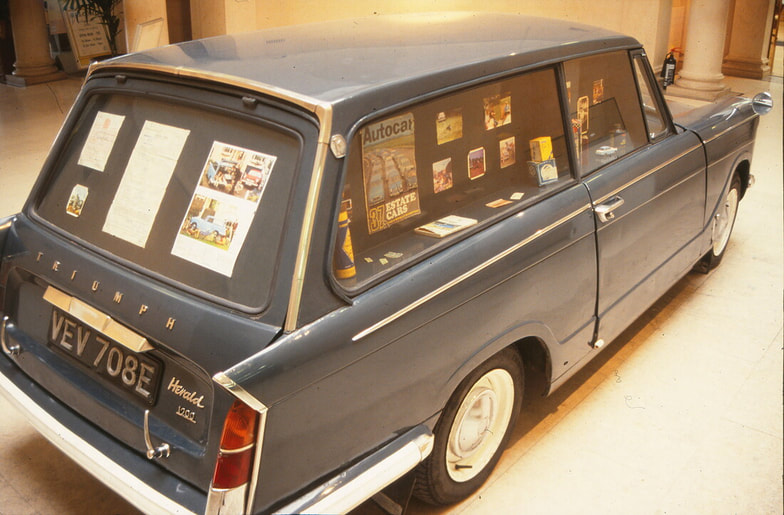
Ferens Gallery, Hull 2002. The rear window shows my birth certificate; the origignal dated invoice for the car; a photograph of me as a baby in front of the car and an old advert for the estate car with a childs pram being loaded into the boot. The side window has some more family photos; spare parts in their boxes and the front page of a very old copy of the magazine 'Autocar' containing a review of all the estate cars on the market including the Triumph Herald. At the time I didn't use the internet and Ebay UK was in its infancy so having these things seemed more remarkable as they had been gathered over many years.
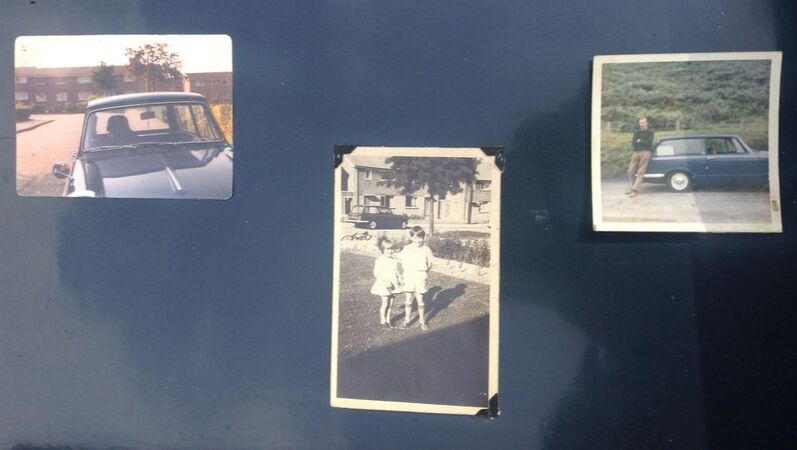
Some photo's from the family photo album. On the left (although you can barely see it here) is our pet dog 'Shep' sitting in the drivers seat; in the middle are the neighbours children from accross the street with the car when it was new in the background. On the right is my dad leaning on the car on a family holiday to Wales in 1970. When I went on to make 'All Roads Lead to Rome' the family photgraphs became central to the show. On stage I go into more depth about what's happening rather than as here where I just hint at some kind of narrative.
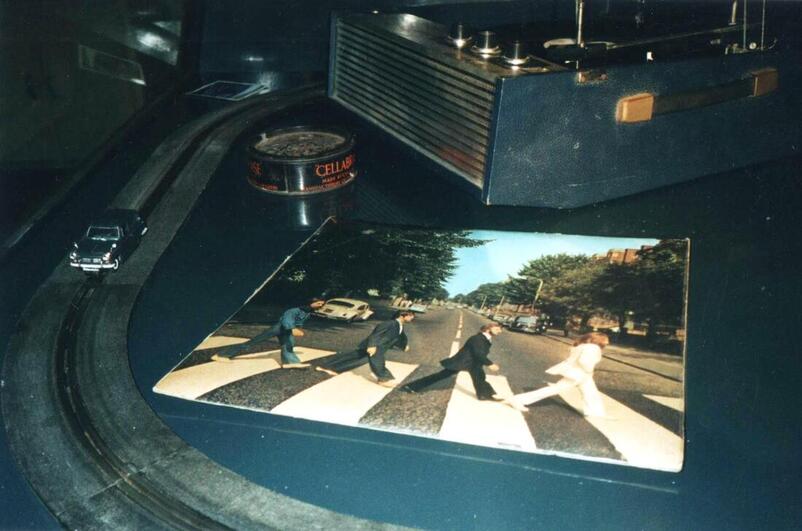
The rear side window cabinet opens up into this large space. A model Triumph Herald Estate I turned into a slot car drives around a record player. The record playing on repeat is the 'Beatles' 'Abbey Road Album'. The significance is that if you look further down Abbey Road, just above Paul MaCartney's, there is another Triumph Herald estate car. The car and the record player are triggered by a movement sensor as somebody walks up to the car to look through the window. The speaker for the record player is mounted behind the front grill of the car.
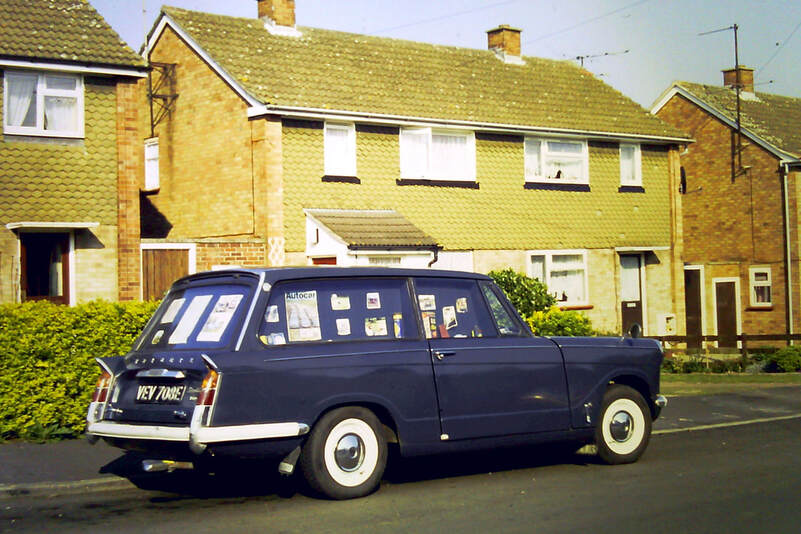
As all the systems inside the car ran on 12 volts so it was independent of mains electricity. I had plans to turn up in various places and have 'pop up' exhibtions. I was going to park outside various art galleries that had never heard of me and create an amazing cv for myself. In this image however it's parked in front of my parents ex-council house. Artisticly this was probably more appropriate.
There was a deep space created inside the car behind the passenger side door window where an old film projector played on a loop. It was triggered by another movement sensor. The film playing in the car was made from some of the footage in this film. There's a slightly over exposed section of film showing the model car hitting a toy Volkswagon Beetle that probably needs more explanation. I used this film as part of the performance lecture 'Landscape, Seascape, Skyscape, Escape.' In the lecture I tell a story about my dad getting the car serviced. (transcribed in the catalogue and copied out below) after hearing the story this piece of footage makes more sense.
The following piece of writing is from the accompanying catalogue for the show at the Ferens gallery. Written and edited by Colin Painter the catalogue contains lots of text of me talking about the vehicles. In this extract I'm doing an impression of my dad explaining why he never took advantage of the serviiceing scheme offered by the garage that sold him the car. English was my dad's second language and as my mum used to put it 'he learnt a lot of his English on the building site'.
...Another window contains years of tax discs, a drawing that Dobrowolski made of the car
when he was eleven years old, the original service book and handbook.
He'd had the car from new and I found the service schedule in a drawer somewhere. It had little tickets that you tear out each service and the first one had been torn out and all the others were still intact in this book. And I questioned him about that. And he said,
'Took it to bloody service station for this ten thousand, twenty f***ing thousand mile service. They put it on this ramp. Triumph Herald had special new independent suspension with a special split ramp where you go up and the wheels come out like this. They put it on the ramp. They put it through there and broke the f***ing brake pipe. Didn't tell me. I went to pick up the car. Paid for the f***ing car. Got in the f***ing car. Drove off the f***ing forecourt straight into side of f***ing Volks-Wagon Beetle. Told me I'd driven it off the premises and so they weren't f***ing liable. I never took it for
f***ing service ever f***ing again.'
...Another window contains years of tax discs, a drawing that Dobrowolski made of the car
when he was eleven years old, the original service book and handbook.
He'd had the car from new and I found the service schedule in a drawer somewhere. It had little tickets that you tear out each service and the first one had been torn out and all the others were still intact in this book. And I questioned him about that. And he said,
'Took it to bloody service station for this ten thousand, twenty f***ing thousand mile service. They put it on this ramp. Triumph Herald had special new independent suspension with a special split ramp where you go up and the wheels come out like this. They put it on the ramp. They put it through there and broke the f***ing brake pipe. Didn't tell me. I went to pick up the car. Paid for the f***ing car. Got in the f***ing car. Drove off the f***ing forecourt straight into side of f***ing Volks-Wagon Beetle. Told me I'd driven it off the premises and so they weren't f***ing liable. I never took it for
f***ing service ever f***ing again.'
In this image I'm spray painting the drivers side door cabinet with the colour of the car so that it matched. I didn't have a spray gun so I had this attachement that fitted onto a vacuum cleaner. (I even spray painted the whole car with it in the early 90's) At the time I posed for the photo I thought it was interesting how I was using an antiquated domestic appliance to do quite an industrial job. I took this notion a lot further in 'All Roads Lead to Rome' as I talk more about the car within the context of the consumer society and refer to a lot of other domestic applicances. Writing now, twenty years later, the image also shows the lack of resources I actually had to do this commission. As you might be able to tell I didn't have a digital camera or video camera to document the project properly either.
